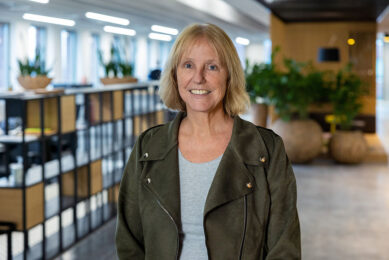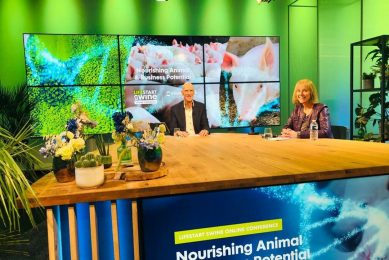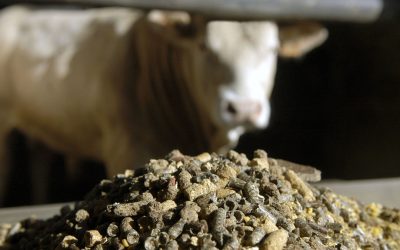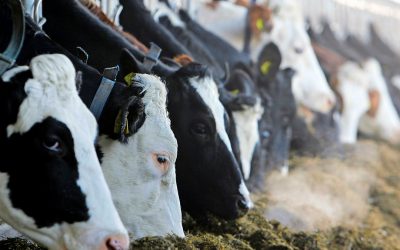Trouw Nutrition sustainable farming seminar in Bangkok
A seminar on Sustainable Farming: Feeding the Future was organized by Trouw Nutrition International (Nutreco) in Bangkok on March 9 2011, in conjunction with VIV Asia.
The meeting aimed to address challenges affecting the world’s food supply such as climate change, competition for resources (land, water supply and energy), and shifting consumption patterns.
By 2050, global warming is expected to reduce yields of today’s crops by 20 to 40% in Asia. At the same time, animal protein consumption is expected to almost double in the first half of this century, to more than 465 million tonnes of meat and fish, and more than one billion tones of milk to meet the growing consumer demand on a global scale. Animal nutrition as such, has a vital role to play in terms of feeding the world of tomorrow.
Challenges feeding the world
Dr Harinder Makkar from the Animal Production and Health Division, Food and Agriculture Organization of the United Nations (FAO), Rome set the tone for the meeting with the first presentation on Feeding Asia and the World.
The food production system, he said is being challenged by a number of threats including changes in the climate, competition for resources (land, water supply and energy), and changing consumption patterns.
Asian consumption of animal products will continue to grow with China and Vietnam emerging as key meat and feed importing nations.
This demand cannot be met by higher livestock numbers alone as natural resources to produce these livestock has a ceiling.
Improving efficiency
Up to 70% of higher production, he reiterated, should come from improvements in production efficiency. Livestock production systems must become sustainable while adapting to climate change and contributing to climate mitigation.
Dr Makkar said solutions must be tailored for production systems; efficiency and resilience on farm, and in processing and marketing would need improvement; and innovative technologies should be developed.
Precision livestock farming
Nutreco’s R&D director Prof Dr Leo den Hartog, R&D Director spoke on Sustainable Feed Solutions focused on precision livestock farming.
While food safety and food quality were the buzzwords in the last decade, sustainability and innovative technology are challenges that the industry has to deal with in response to changing demographics, urbanization, and a growing middle class population – all of which has led to a surge in protein consumption in emerging markets.
According to Prof den Hartog, animal feeding is at a critical juncture in the feed to food chain. It is essential to produce high-quality feed solutions that support best animal performance, and assure feed-to-food safety.
The future of animal feeding will require a change in the business model. While the present model calls for optimizing profitability and production efficiency, the new model will have to consider ways to optimize sustainable profitability, and strike a balance between economy, ecology and society, he said.
Rabobank view
John Baker, Rabobank’s Regional Head of Food and Agri Research in Asia spoke on the Evolution of the Global Food and Agribusiness Supply Chain. He focused on 3 challenges affecting the supply chain, namely Up Stream (farm), Mid Stream (processing), and Down Stream (distribution).
He observed the following trends:
- rising influence of the farm inputs sector,
- emergence of organized retail,
- volatile migration to the midstream,
- rising importance of proprietary information,
- margin compression in the midstream, and
- increasing working capital requirements for the midstream.
In the battle for Mid Stream and Up Stream influence, Baker said that food security is critical issue for all stakeholders in the global food and agriculture chain (not just Asia).
For food and feed staples, Mid Stream players with narrower product focus will need to look for new ways to deal with competitors who offer a broader range of competitively priced products.
Translating proprietary information into proprietary knowledge is critical to evaluating and managing market risks, and finding ways to leverage the market information/intelligence will be an important success factor in the future, Mr Baker stressed.
“The key,” he said, “is to translate these information/intelligence sources into knowledge that can be used for tactical and strategic advantage. “
Preserving antibiotics
In his presentation, Health by Stealth – Preservation of Antibiotic Efficacy, Peter McKenzie, Veterinary Services Manager of Rivalea, Australia said Francois Madec’s groundbreaking work has shown that there are over 20 management risk factors for respiratory and enteric disease in progeny pigs, and if 15 are controlled, then the site has quite robust health.
The fewer risk factors controlled, the higher the disease frequency and severity. The number of factors controlled must be around 12 before any improvement is seen according to McKenzie.
Rotation of antibiotic classes is essential to preserve activity, and if antibiotics are needed for future disaster events, it is essential that the routine use be largely replaced by management, he cautioned.











